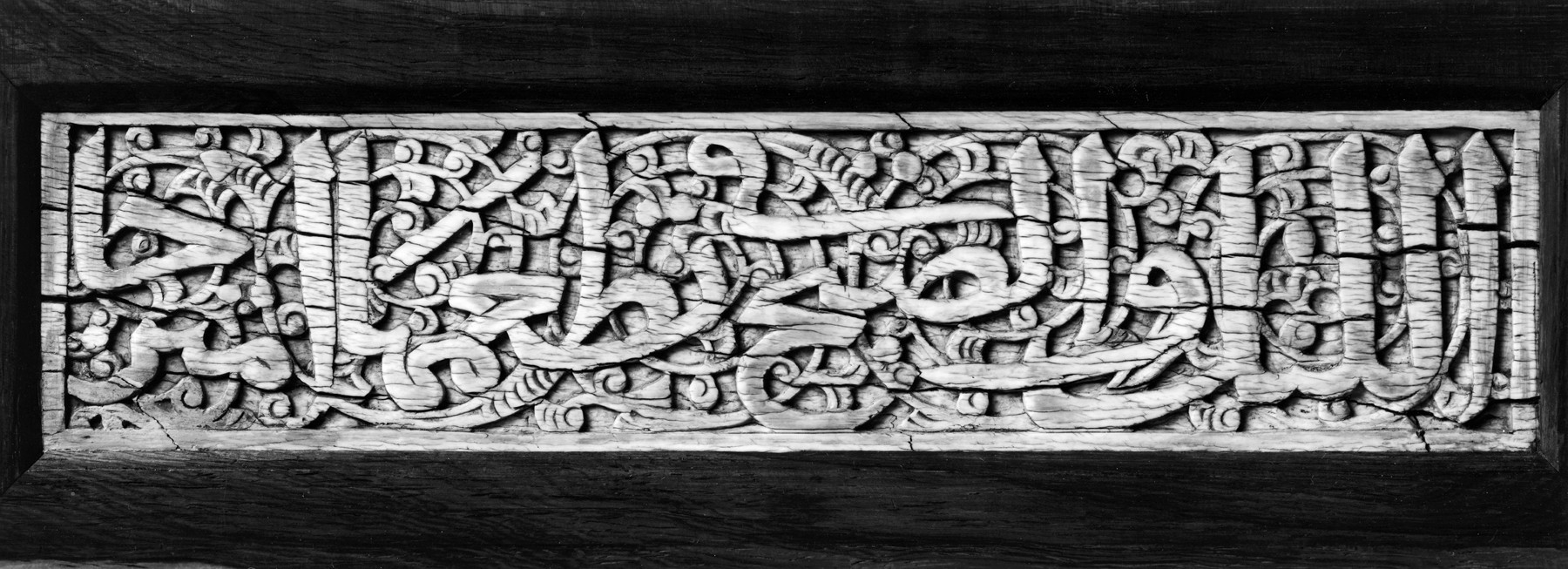Plaque
This plaque was probably originally set into a piece of furniture in a madrasa, or theological college, built by Sultan Qaitbay (1467-1496), ruler of the Mamluk Dynasty and an active patron of the arts. The inscription in "thuluth" script is an invocation based on two verses of the Qur'an (from "sura," or chapter, 74). It reads: "Night and day have mixed in the enjoyment of it."
Inscription
Provenance
Provenance (from the French provenir, 'to come from/forth') is the chronology of the ownership, custody, or location of a historical object. Learn more about provenance at the Walters.
Henry Walters, Baltimore [date and mode of acquisition unknown]; Walters Art Museum, 1931, by bequest.
Exhibitions
| 2013-2014 | Threshold to the Sacred: The Ark Door of Cairo’s Ben Ezra Synagogue . The Walters Art Museum, Baltimore; Yeshiva University Museum, New York. |
| 1979 | Calligraphy in the Arts of the Muslim World. Asia House Gallery, New York; Cincinnati Art Museum, Cincinnati; Seattle Art Museum, Seattle; Saint Louis Art Museum, St. Louis. |
Geographies
Egypt (Place of Origin)
Measurements
2 9/16 x 11 1/4 in. (6.5 x 28.5 cm)
with frame 4 5/16 x 13 x 3/8 in. (11 x 33 x 1 cm)
Credit Line
Acquired by Henry Walters
Location in Museum
Not on view
Accession Number
In libraries, galleries, museums, and archives, an accession number is a unique identifier assigned to each object in the collection.
In libraries, galleries, museums, and archives, an accession number is a unique identifier assigned to each object in the collection.
71.561




